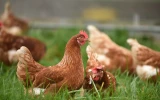Is Chicken Farming Profitable? (Full 2024 Breakdown)
Chicken farming, a sector integral to agriculture, has seen notable growth over the years. In 2024, the global poultry market has a forecast of 1.5-2% growth, a decline from the long-term average. In this article, we'll delve into the profitability of chicken farming, examining factors like cost of feed, market demand, and advancements in farming technology to provide a comprehensive breakdown of its financial viability.
Chicken farming can be profitable in 2024. Startup costs average $10,000-$15,000 for a small-scale operation, while ongoing costs average $1,500-$2,000 per month. Revenue depends on market prices and farm size, with small farms earning $1,000-$5,000 monthly, yielding a 5-12% profit margin.
Although chicken farming can be pretty profitable, especially with the latest technology and market strategies, the profit you make depends a lot on factors like the cost of feed, healthcare for the chickens, and even the climate of where you farm. Want to know more about what makes chicken farming tick? Let's see below!
Summary
- Earnings for poultry farms vary by revenue stream, with meat yielding $2-$4 per lb, eggs $0.10-$0.30 each, and breeding $5-$15 per chick.
- Initial costs to start a poultry farm range from $150 for local chickens to $1,000 for layer operations, while monthly costs range from $40 to $500 depending on the type of operation.
- The biggest recurring expense is feed, ranging from $5,000-$25,000 annually while labor, utilities, transportation, and insurance are other major ongoing costs.
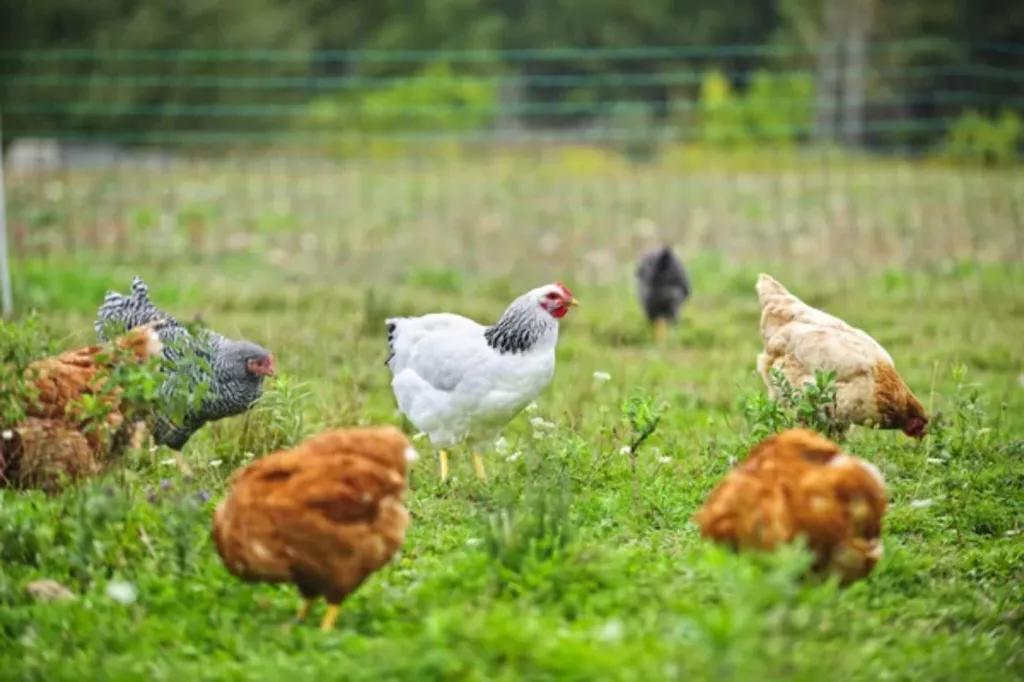
On this page:
Poultry Farm Profit Calculation
When you venture into chicken farming, understanding the profit margins is crucial for evaluating financial viability. On average, profit margins for poultry farming can lie between 5-12%, largely dependent on your operation's scale and efficiency.
Revenue streams in chicken farming
Your revenue will stream from:
- Meat sales: Earnings per bird are often based on weight.
- Egg production: The sale of eggs can sustain a steady cash flow.
- Breeding: Income from selling chicks.
- Additional channels like selling manure or feathers.
A simple profit potential breakdown for you might look like this:
| Revenue Stream | Earnings Range |
|---|---|
| Meat sales | $2 - $4 per lb. |
| Egg sales | $0.10 - $0.30 per egg |
| Breeding | $5 - $15 per chick |
Chickens are one of the few beginner-friendly farm animals that can be raised for meat and be easily profitable.
Potential revenue from Kienyeji chicken farms
Kienyeji refers to indigenous breeds of chicken in Kenya and other parts of Africa that are typically raised in a free-range system. They are popular due to their hardiness and adaptability.
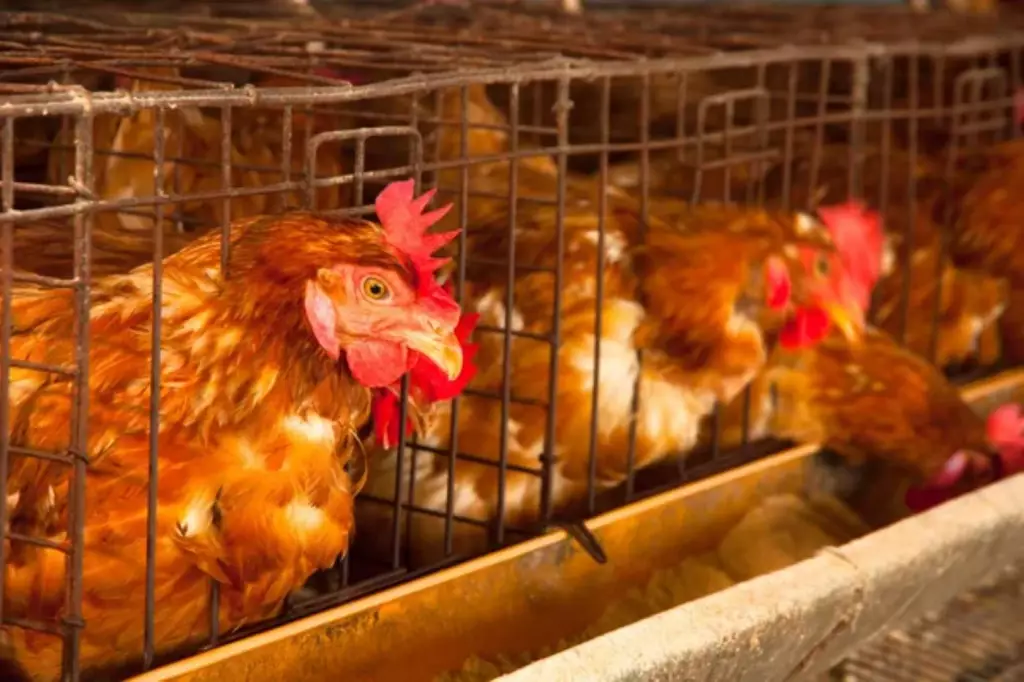
| Costs | Estimated Range |
|---|---|
| Initial | $200-$500 |
| Monthly | $50-$150 |
| Revenue | Estimated Range |
|---|---|
| Per chicken | $10-$15 |
Potential revenue from raising free-range chickens
Free-range chickens have the freedom to roam outside, leading to a better quality of life and potentially higher market prices for their products.
| Costs | Estimated Range |
|---|---|
| Initial | $300-$800 |
| Monthly | $100-$200 |
| Revenue | Estimated Range |
|---|---|
| Per egg | $0.10-$0.30 |
| Per chicken | $15-$25 |
Potential revenue from raising local chickens
Local chicken breeds, which are well-suited to the local environment, may offer lower input costs due to their adaptability.
| Costs | Estimated Range |
|---|---|
| Initial | $150-$400 |
| Monthly | $40-$100 |
| Revenue | Estimated Range |
|---|---|
| Per chicken | $8-$12 |
Potential revenue from layer poultry
Layer poultry focuses on egg production. Profit depends greatly on feed quality, health management, and egg output. A good idea to make a 1-acre farm profitable is to sell chicken eggs.
| Costs | Estimated Range |
|---|---|
| Initial | $500-$1,000 |
| Monthly | $200-$500 |
| Revenue | Estimated Range |
|---|---|
| Per 100 eggs | $15-$40 |
Profit margin for chicken farming
Let's say a chicken farmer has an annual revenue of $100,000 from selling 20,000 chickens at $5 per chicken. The farmer's total expenses for the year are $90,000, including costs for feed, labor, utilities, etc.
To calculate profit margin:
- Revenue = $100,000
- Total expenses = $90,000
- Net profit = Revenue - Expenses = $100,000 - $90,000 = $10,000
- Profit margin = Net profit / Revenue x 100 = $10,000 / $100,000 x 100 = 10%
Therefore, the profit margin for this chicken farming business is 10%, which falls within the typical range of 5-12% according to industry standards.
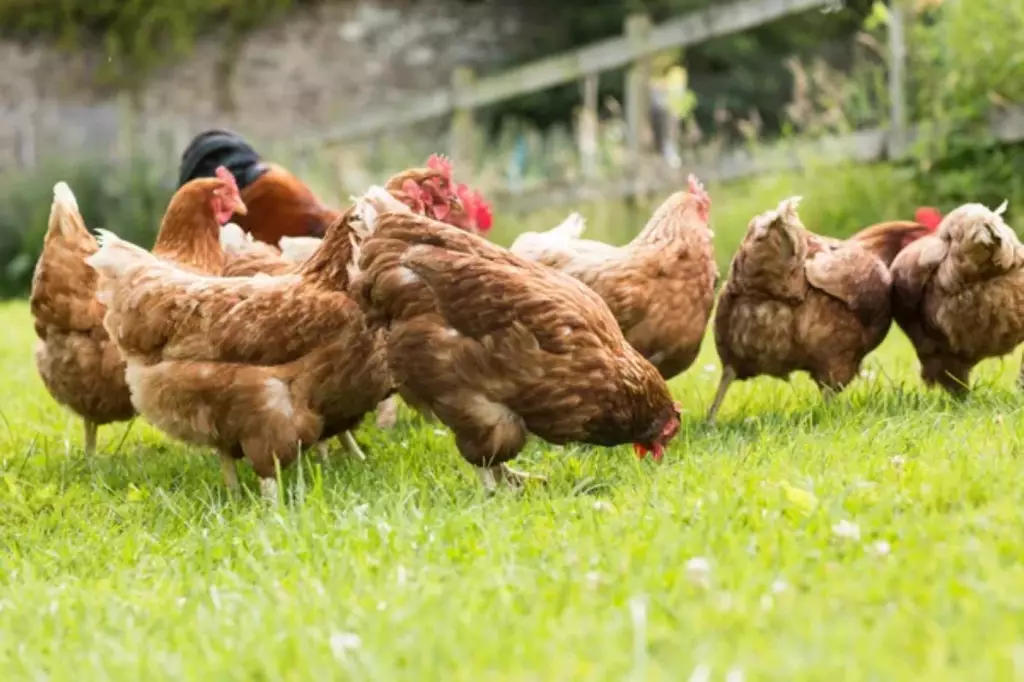
To help you learn more about the profitability of poultry farming if you have 40 acres of land, you can read this article.
Breakdown of Expenses in Chicken Farming
When you're diving into chicken farming, understanding your cost breakdown is key. Let's break down the primary expenses you’ll encounter.
Initial expenses in chicken farming
Table 1: Estimated Initial Cost Ranges
| Item | Cost Range |
|---|---|
| Land | Variable |
| Construction | $10,000 - $30,000 |
| Equipment | $5,000 - $15,000 |
- Land: You'll need space for your chickens to live and roam.
- Construction: Housing structures to keep your chickens safe.
- Equipment & infrastructure: From feeders to watering systems.
Recurring expenses in chicken farming
Table 2: Estimated Recurring Cost Ranges per Year
| Expense | Cost Range |
|---|---|
| Feed | $5,000 - $25,000 |
| Labor | $10,000 - $50,000 |
| Utilities | $1,000 - $5,000 |
| Transportation | $1,000 - $10,000 |
| Technology | $500 - $5,000 |
| Insurance | $2,000 - $3,000 for farms under 100 acres |
- Feed: The biggest ongoing cost, efficiency is critical.
- Labor: Daily care and management of the flock.
- Utilities: Water and electricity for your facilities.
- Transportation: Costs for moving chickens or eggs to the market.
- Technology: Investments in automation can save labor costs in the long run.
- Insurance: Protecting your investment from unforeseen events.
Factors That Influence Chicken Farm Profits
When considering the profitability of chicken farming, numerous factors come into play that can either increase or decrease your potential earnings.
Economic and market influences
Your profits are greatly affected by market rates and global demand. In 2024, you need to monitor the economic trends and market demand for chicken products, as these dictate the prices you can command for your livestock.
| Economic Indicator | Estimated Influence on Profit Margin |
|---|---|
| Market rates | High |
| Market demand | High |
| Global demand | Moderate to high |
Environmental and location considerations
Climate and land acquisition play a crucial role in your farm's sustainability. The right location can ensure a more sustainable operation and protect you from the effects of climate change.
| Environmental Factor | Impact on Chicken Farming |
|---|---|
| Climate | High |
| Land availability | High |
Operational efficiencies
Investing in the right equipment, tools, and technology can significantly boost your farm's efficiency. Proper use of data can lead to insights that increase productivity and, consequently, profitability.
| Operational Aspect | Impact Level |
|---|---|
| Equipment & tools | High |
| Technology & data | High |
Quality and type of production
The quality of your chicken products and whether you're producing organic or non-GMO items can affect your bottom line. Chickens high in nutrients and protein are often more valuable in consumer markets.
| Production Type | Impact on Revenue |
|---|---|
| Organic and non-GMO | High |
| Nutrient and protein quality | Moderate to High |
Regulations and compliance
Observing local laws, securing the necessary permits, and adhering to regulations at the state and city level are paramount for avoiding costly legal challenges and ensuring the smooth operation of your farm.
| Regulatory Aspect | Impact on Operational Cost |
|---|---|
| Local laws & permits | High |
| State & city regulations | High |
Disease and pests
Disease and pest management are integral for maintaining animal health and preventing profit losses. The impact of COVID-19 has also posed recent challenges to poultry farmers worldwide.
| Regulatory Aspect | Impact on Operational Cost |
|---|---|
| Local laws & permits | High |
| State & city regulations | High |
Animal welfare
Ensuring good animal welfare practices can not only meet ethical standards but also influence consumer perception and marketability, affecting your overall revenue.
| Animal Welfare Practice | Impact on Public Perception |
|---|---|
| Good practices | High |
| Poor practices | High (Negative Impact) |
Product variety
Offering a variety of products such as eggs, meat (broiler and red meat), or even different types of chickens such as broilers, pullet farms, and breeder farms can diversify your income sources.
| Product Variety | Impact on Profit Margin |
|---|---|
| Eggs | High |
| Meat (broiler and red meat) | High |
| Chicken varieties | Moderate |
Remember, as a chicken farmer, aligning your farm operations with market demands and maintaining high operational standards can significantly affect your profit margins.
Keep abreast of market dynamics and regulations changes to ensure you stay profitable in 2024 and beyond.
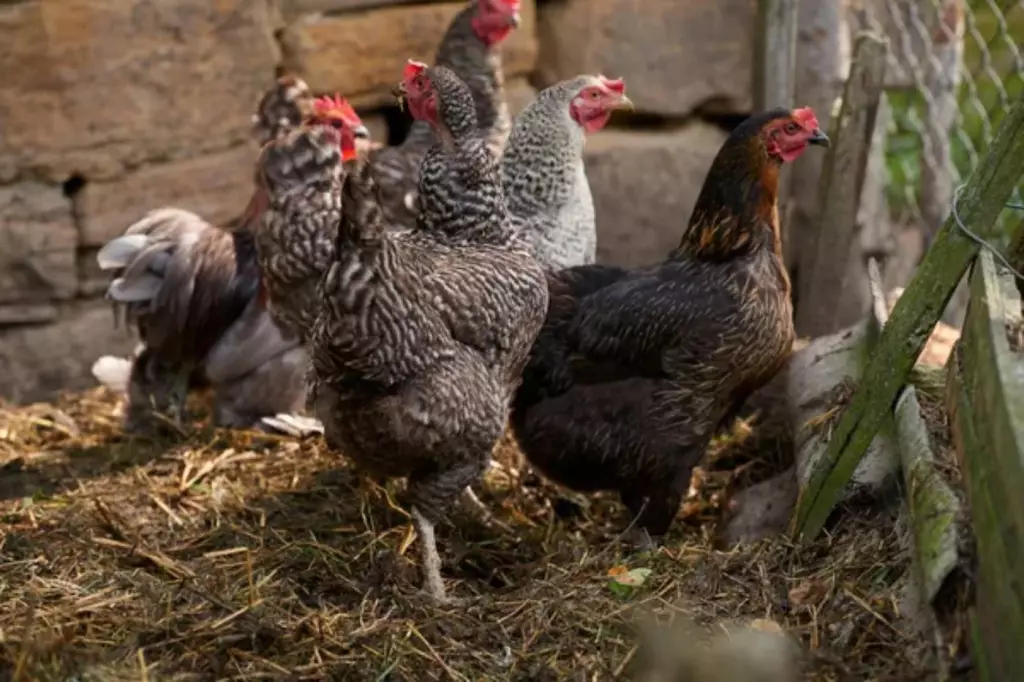
Reducing Expenses and Enhancing Income Streams
To ensure your chicken farming venture remains profitable in 2024, it involves a combination of strategic planning and the efficient management of resources.
Strategic business planning
Your business plan is your roadmap to profitability. It should detail how you will achieve higher yields and manage your expenses effectively. By defining your business model and mapping out your revenue streams, you'll set yourself up for success.
| Element | Consideration Range |
|---|---|
| Profit margin | 5-15% for poultry |
| Yield increase | 10-30% annually |
Market positioning
Understand market trends and align your products accordingly to secure better market prices. Cater to the increasing consumer demand for locally sourced and sustainable produce.
| Trend | Strategy |
|---|---|
| Sustainable farming | Target premium pricing |
| Local demand | Engage in community sales |
Cost inputs and management
Keep a close watch on cost inputs like feed, electricity, and labor to maintain your profit margins. Source cost-effective solutions without compromising on the quality of your output.
| Input | Cost-Effective Range |
|---|---|
| Feed | 25-40% of total costs |
| Labor | 10-20% of total costs |
Innovations in farming
Embrace technology and innovative farming practices to increase efficiency and reduce waste. This can include automated feeding systems or advanced poultry production techniques.
| Innovation | Benefit |
|---|---|
| Automated systems | Reduce labor costs by 5-10% |
| Genetic selection | Boost yields by up to 15% |
Revenue optimization
Keep tabs on your revenue streams; whether you're selling eggs or meat, diversify to maximize profits. A varied product offering can help cushion against market fluctuations.
| Revenue Stream | Optimization Method |
|---|---|
| Selling eggs | Negotiate bulk sales contracts |
| Poultry processing | Incorporate on-site for added value |
Infrastructure and equipment
Invest wisely in your chicken house and other essential equipment. Efficient infrastructure is key to sustaining a productive environment for your birds.
| Infrastructure | Recommended Investment Range |
|---|---|
| Chicken house | 20-30% of initial capital |
| Processing equipment | 10-15% of annual budget |
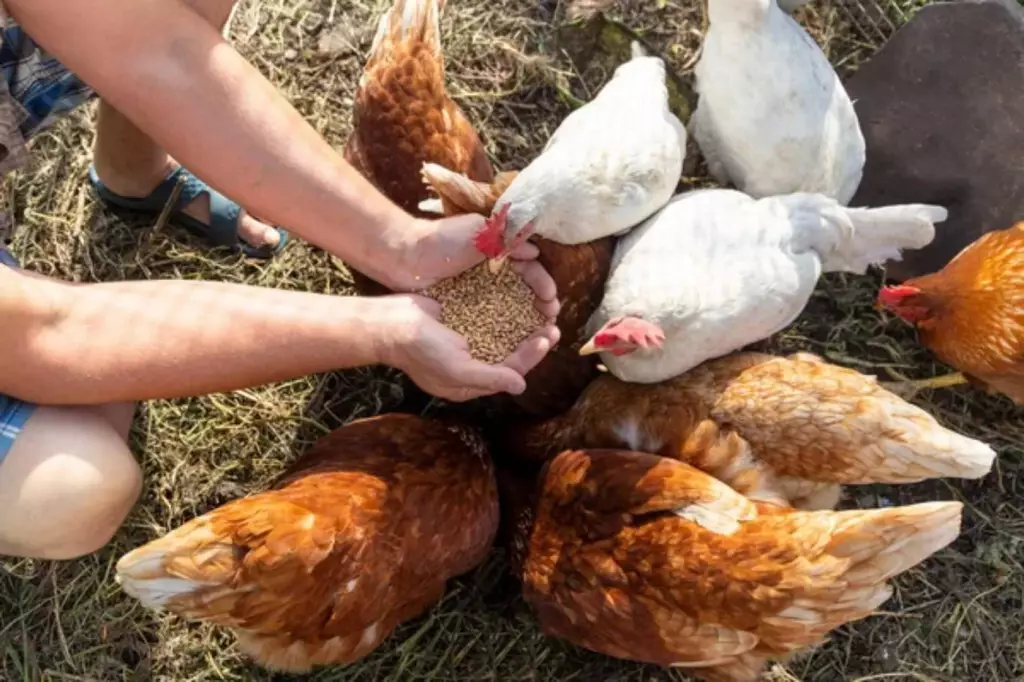
Human resources and training
Skilled labor is essential. Investing in training for your growers can lead to better farm management and lower mortality rates, affecting overall profitability.
| HR Aspect | Suggested Focus |
|---|---|
| Training | Ongoing, with an emphasis on efficiency |
| Skilled labor | 15-25% higher wage than unskilled labor |
Marketing and sales strategies
Develop compelling marketing and sales strategies to ensure your chicken products meet the right audience. Your approach should highlight quality and sustainability to attract a loyal customer base.
| Strategy | Expected Outcome |
|---|---|
| Digital marketing | Expand reach by 20-30% |
| Customer education | Increase repeat sales by 10-15% |
